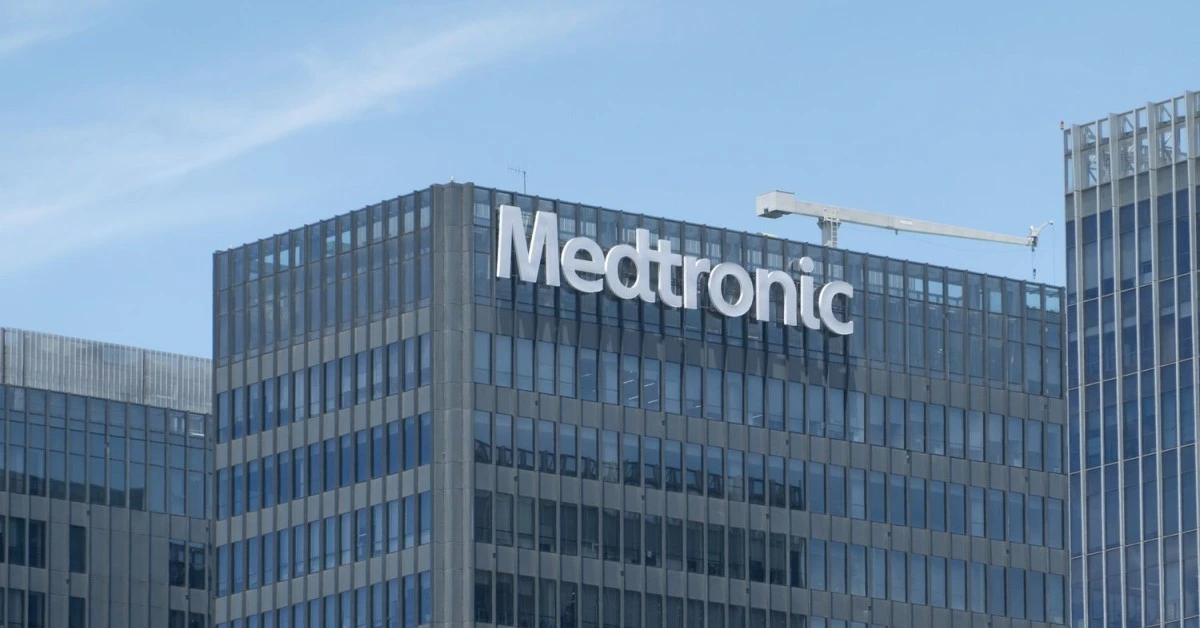
IRELAND –Medtronic, a global leader in medical technology, is facing unexpected financial pressure due to declining sales of surgical staplers and related supplies.
These tools, which are used to hold skin and tissue together after surgery, have been a key part of Medtronic’s business for years.
However, recent distributor issues and increased competition have impacted sales, causing the company’s stock to drop by more than 7%.
Despite this setback, Medtronic remains confident about the future. CEO Geoff Martha acknowledged the challenges but emphasized the company’s commitment to reviving growth in its surgical division.
“These pressures aren’t new,” he told analysts, adding that they are working to bring the business back in line with Medtronic’s overall growth targets.
Mixed financial results and growth in other segments
Medtronic reported a mixed financial performance for its latest quarter. The company’s profit exceeded Wall Street expectations, with a third-quarter adjusted net profit of US $1.8 billion on US $8.3 billion in sales.
However, total sales fell below expectations, which contributed to the stock decline. Some analysts, like Vijay Kumar from Evercore, believe the stock drop was an overreaction. “The 7% decline indicates that there is no credit being given for protecting the bottom line,” he said.
While the stapler segment struggled, Medtronic saw significant growth in its pulsed field ablation (PFA) segment, which is used to treat atrial fibrillation (AFib)—a common heart rhythm disorder.
The company expects this segment alone to generate US $1 billion in revenue this fiscal year, with potential to reach US $2 billion as it expands to more markets.
Martha highlighted the strong safety profile of Medtronic’s PFA technology as a major advantage over competitors.
Meanwhile, Johnson & Johnson MedTech temporarily halted U.S. cases for its own PFA system due to safety concerns, but later resumed after an internal review.
Another area of promising growth is renal denervation therapy for treating high blood pressure.
Medtronic’s Symplicity Spyral device is moving toward Medicare coverage, a development that could significantly expand its use.
“The current standard of care just isn’t working,” Martha said, pointing out that many people with hypertension struggle to manage the condition with medication alone.
He believes this new therapy will be widely adopted by patients, physicians, and health systems.
Surgical robotics and market outlook
Medtronic is also making progress in robotic-assisted surgery. The company plans to submit its Hugo robotic system for FDA approval in urology by the end of next month.
Internationally, the number of Hugo procedures has doubled year-over-year, making it a key driver for future growth.
Despite the challenges in its medical surgical division, which declined 0.4% organically, Medtronic remains optimistic.
Martha attributed the drop to changes in distributor purchasing patterns, rather than long-term issues.
Analysts at J.P. Morgan believe these fluctuations are temporary and expect the company to recover.
Looking ahead
Medtronic is maintaining its organic sales growth forecast of 4.75% to 5% for fiscal year 2025 and expects diluted adjusted earnings per share to be between US $5.44 and US $5.50.
CEO Martha reassured investors that Medtronic is entering a new phase of growth after nine consecutive quarters of mid-single-digit expansion.
“The turnaround hasn’t been overnight,” he admitted, “but we’re now seeing our growth drivers take effect, and these are big drivers.”
With new leadership on board—including Thierry Piéton, who will take over as Chief Financial Officer on March 3—Medtronic is positioning itself for a stronger future.
XRP HEALTHCARE L.L.C | License Number: 2312867.01 | Dubai | © Copyright 2025 | All Rights Reserved